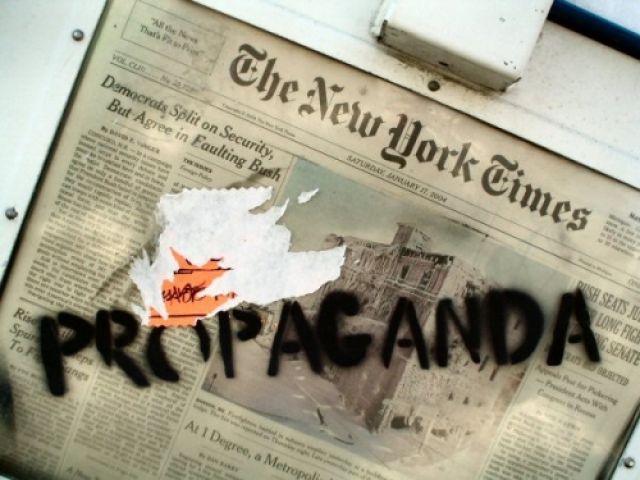
Many have taken mining boss Gina Rinehart's bid to take up a seat on Fairfax's board of directors by buying up almost 20% of the media company's shares as a threat to its “independence” and “quality journalism”. But many opponents of Rinehart's bid are glossing over Fairfax's ugly record.
A Rinehart-controlled media would do much damage to the possibility of informed public discussions in Australia.
She would likely also follow Rupert Murdoch's lead and turn Fairfax's newspapers into promoters of climate denial, false science and inaction so that her real money-maker — the fossil fuel industry — could continue unabated. Rinehart has already made inroads to television, buying a seat on Channel Ten's board, which then gave reviled right-winger Andrew Bolt his own TV program.
An online petition by lobby group GetUp! has led the call to defend Australia's second biggest media corporation's “commitment to editorial independence” by stopping Rinehart's “vested corporate interests”. Senior Fairfax journalists and editors said Rinehart should not be permitted a seat on the board because she refused to sign its “charter for editorial independence”.
GetUp! says media free from corporate vested interests in essential to democracy, which is true. But Fairfax is not by any stretch free from such powers.
Rinehart now owns 18.7% of shares, but the Commonwealth Bank owns 12.4% and National Australia Bank owns 7.1%. Members now sitting on the board have personal interests in energy companies such as AGL and ties to companies in the defence, oil, gas and mining industries.
Campaigning to preserve the Fairfax charter misses several big points. Fairfax is still media owned by the 1%. GetUp’s defence of Fairfax management also glosses over management's push to throw 1900 staff out of work.
The management's bid to slash jobs and shrink newsrooms to restore higher profits will lead to more “churnalism” news — PR-sponsored posts, republished press releases and syndicated wire copy.
A study by two Sydney university academics showed AAP wire copy made up 79% of top and national stories published by Fairfax's Sydney and Melbourne newsrooms.
The study found that “Fairfax sites theage.com.au and smh.com.au shared a monthly mean of around 97% of their content with at least one other metro, while at Brisbane Times mean sharing was 88% and at WAtoday, 95%.”
And, as Jeff Sparrow wrote on June 27, this is a failure of the market system that the dominant media is firmly embedded in. There is still huge potential for journalism, and: “Amidst these huge monopolies, an expanded state [media] sector would offer more choice, not less.”
Sparrow proposes a huge rise in funding and resources for the ABC: “The technology that so threatens the commercial logic of Fairfax and News Ltd poses no problem for publicly funded journalism. Where the commercial media companies see the internet as a problem, an expanded ABC could devote resources to devising new ways to spread information, rather than hamstringing the web via paywalls and the like.”
The media that exists today is not something to defend. Fairfax is only “independent” insofar as it doesn't break the corporate model of journalism.
Edward Herman, who co-authored Manufacturing Consent with Noam Chomsky, says the very model of corporate media means that they will distort the news: “They are profit-seeking businesses, owned by very wealthy people (or other companies); they are funded largely by advertisers who are also profit-seeking entities, and who want their ads to appear in a supportive selling environment.
“The media are also dependent on government and major business firms as information sources, and both efficiency and political considerations, and frequently overlapping interests, cause a certain degree of solidarity to prevail among the government, major media, and other corporate businesses.”
These interests dictate most of Australia’s media and this is a part of the growing concentration of political and economic power taking place in Australian capitalism.
This is why Green Left Weekly was launched 20 years ago, to be a newspaper politically independent from the corporate elite. The internet has allowed new spaces for journalism and new opportunities to break the corporate dominance of the media. But campaigning on the myth that one powerful corporation is more “independent” than another will not help us get there.
